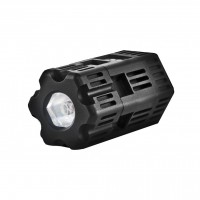Choosing a high speed camera for your microscope.
Most high speed cameras can be fitted to a microscope with the use of a C-mount adapter, but what makes some cameras more suitable than others?
The choice of a camera for high speed imaging on a microscope has many facets, some more obvious than others. Firstly and fairly obviously, the physical size and shape – Does the camera fit without binding on the body of the microscope, and is it small enough to be supported just by the C-mount without getting in the way, or damaging either camera or microscope? A camera that gets in the way will not perform its function very well, and if it obstructs access to the eyepiece of objective, may prove very impractical.
Secondly, the control. With the camera being part of an integrated laboratory set up, incorporation into other software, rather than being controlled by a package all by itself can be an advantage. For instance, incorporating the camera into a LabVIEW environment? Even if used independently, does the camera have buttons on the camera head that need to be accessed, but are hidden from view or awkward to reach?

Thirdly, light sensitivity. On a microscope you have no control over the aperture, and often the lighting is fixed, difficult to change or would heat the specimen too much. Changing the lighting is one improvement that is well worth considering, possibly to IDT’s LED lighting, but this may not be possible on the model of microscope.
Lastly, and probably most importantly, when choosing a suitable high speed camera for your microscope, is the pixel size. This may not seem important at first glance, but the pixel size has an important relation to maginification.
The magnification with a given microscope/ objective will produce a certain size of image. If this image is magnified more by using a different objective, it can result in reduced depth of field, reduced light level etc. However, if a sensor with smaller pixels is used, a greater resolution image can be achieved without using a higher magnification objective, effectively this magnifies the image with no reduction in depth of field, as the same number of pixels on the sensor is concentrated on a smaller part of the image. Therefore, the smaller the pixels the better, to maintain better depth of field at better magnifications.
The magnification with a given microscope/ objective will produce a certain size of image. If this image is magnified more by using a different objective, it can result in reduced depth of field, reduced light level etc. However, if a sensor with smaller pixels is used, a greater resolution image can be achieved without using a higher magnification objective, effectively this magnifies the image with no reduction in depth of field, as the same number of pixels on the sensor is concentrated on a smaller part of the image. Therefore, the smaller the pixels the better, to maintain better depth of field at better magnifications.
However, smaller pixels means less light gathering capability. The ‘normal’ (if there is one) size of pixel for a high speed camera is 12 microns. Some have larger pixels, to increase the light sensitivity, and a few have smaller. IDT specialise in maximising the light sensitivity and reducing the background noise level to virtually zero, resulting in very clean images and very high light sensitivity sensors.

Of those with very small pixels and benefiting from this technology is the CrachCam Mini 3525. The tiny camera can frame at up to 2200 frames per second at a resolution of 2560×1440 pixels.
As an alternative, the X-Stream Mini 3520 allows framing at up to 1000fps at the same resolution, streaming directly to your laptop, either the DRAM or SSD. This means very long events can be captured, and with no need for image download, the workflow is a lot faster. Also, as there’s no memory in the camera head, it’s a very cost-effective solution.
If you’d like to discuss your application or would like to try out a camera on your microscope, please contact us today.

